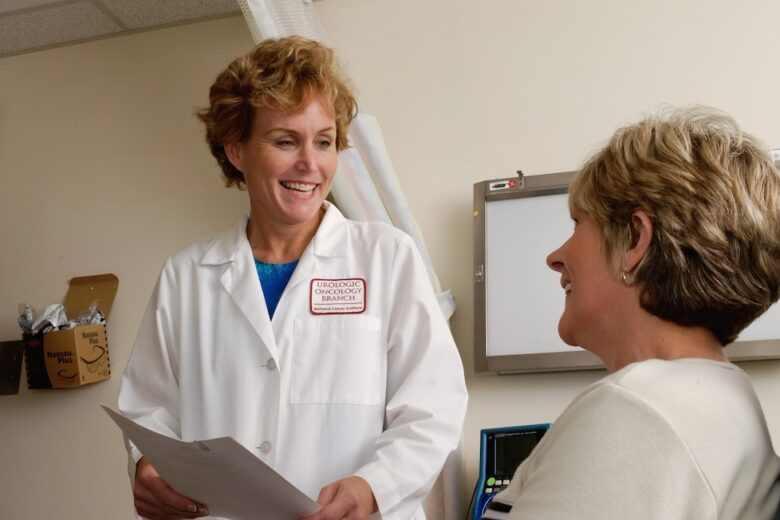Three tips for relieving bottlenecks in patient flow
Bottlenecks in patient flow negatively affect patient satisfaction and outcomes. Bottlenecks are often signs of other inefficiencies in the processes medical practices have in place, from appointment scheduling to patient intake and care.
As healthcare providers are constantly under pressure to do more with less to maintain profitability, relieving patient flow bottlenecks can solve multiple issues while improving the patient experience.
Patient flow is how patients progress through their healthcare journey with a provider and outline their movements through a clinic or healthcare facility – from patient intake, admission, medical care to billing and discharge. Effective patient flow, supported by patient intake management software, is a key indicator of process management success in healthcare facilities. In effect, patient flow identifies a practice’s efficiency in both patient care and doing business.
Follow these three tips in relieving bottlenecks in patient flow and see how it can keep the cost of running your practice low and your profits high while maintaining positive patient experiences and satisfaction.
First tip: Chart out your clinic’s workflow and patient flow
Identifying which part of the patient journey in your clinic is challenging without seeing the whole patient and office workflow. Mapping out the patient movements provides a clear perspective of how a medical practice operates at every stage of the patient journey.
Carefully planned office workflows enable providers and staff to work together, completing their various responsibilities and providing outstanding patient care. However, when not integrated with the patient flow, gaps in the patient flow and experience can develop.
Charting both the patient and clinic flow can help you pinpoint the common choke points and anticipate other bottlenecks that may arise in time.
Second tip: Know common choke points in patient flow
Once you map your patient and office flows, identifying bottlenecks becomes easier. For example, some of the familiar sources of inefficiencies of the patient flow are the following:
- Inefficient appointment scheduling and patient no-shows
- Time-consuming patient intake procedures
- Pre-occupied front office with a high volume of phone calls
- Sluggish insurance eligibility verification
- Complicated billing and payment process
Inefficient appointment scheduling affects the patient flow even before an actual visit to a clinic. Missed appointments and patient no-shows cause delays to other patients waiting for their scheduled time. Time-consuming patient intake procedures also impede the patient flow and can lead to other office inefficiencies, such as errors in handwritten information and duplicate work of entering information into multiple programs.
With the vast amount of intake forms to manually enter into the system, medical practices suffer from time-consuming procedures. Combined with a high volume of phone calls, your staff are preoccupied with time-consuming work that could be easily automated instead of spending time assisting patients in the office.
A sluggish insurance eligibility verification system and a complicated billing and payment process create additional bottlenecks that can ruin a positive healthcare experience. These inefficient front office functions may leave patients frustrated and dissatisfied.
Third tip: Relieve current and future bottlenecks with the patients in mind
The key to relieving the bottlenecks in patient flow lies in putting patients at the center of the solution—their convenience and satisfaction. Patient-centric health information technology innovations are already available in the market that helps overcome the problem.
Upgrading your practice management systems with the appropriate doctor appointment software allows medical practices to improve patient flow and become super-efficient in every step.
Curogram’s secure appointment booking and two-way text messaging, for example, have made booking appointments more patient-centered than ever before by allowing patients to book, reschedule, confirm or cancel a schedule by simply texting. Coupled with Curogram’s appointment reminder feature, it helps reduce both patient no-shows and the volume of phone calls.
Curogram also offers a streamlined electronic patient intake procedure allowing front offices to send digital intake forms to patients. They fill out and submit back electronically and securely from wherever they are. Patients don’t have to arrive early to complete the form in person, reducing wait times and crowded waiting rooms.
Curogram is 100% HIPAA compliant and digital you can use on your desktop, laptop, or mobile phone. It integrates with known electronic health records and allows practices to verify insurance eligibility and process billing and payments easily.
There is no one-solution-fits-all relief to office inefficiencies. But, these tips guarantee to ease bottlenecks of the patient flow and improve in providing patient-centered care.




